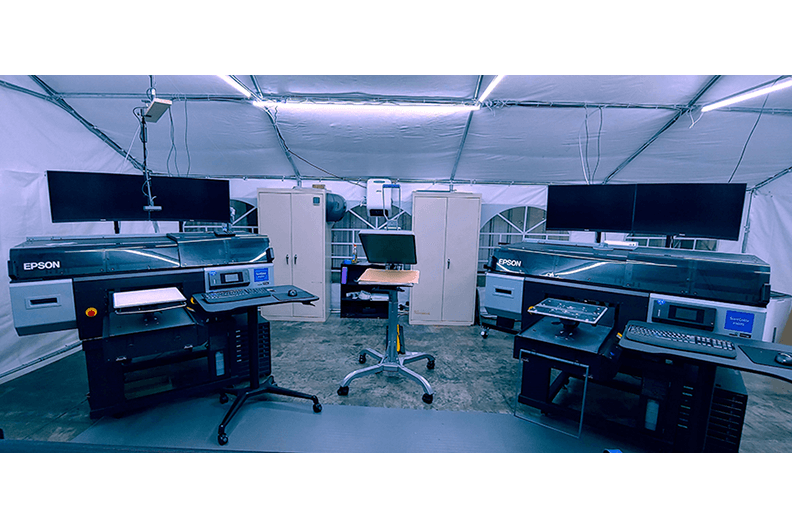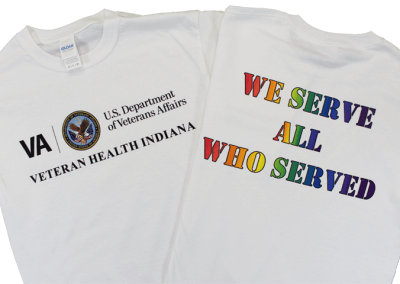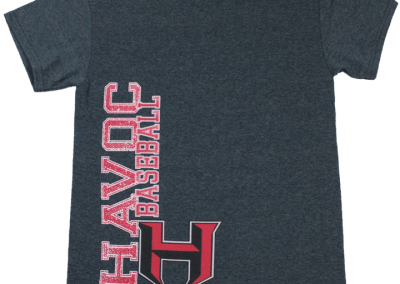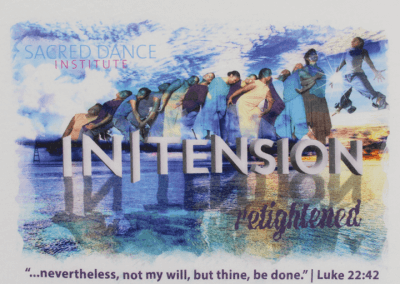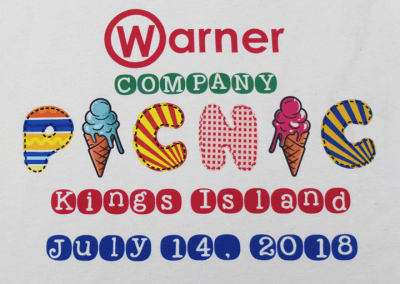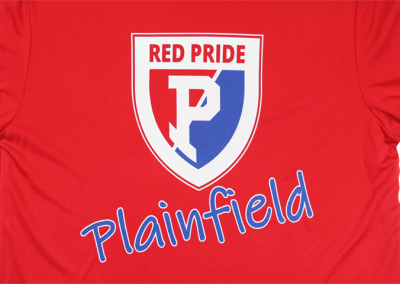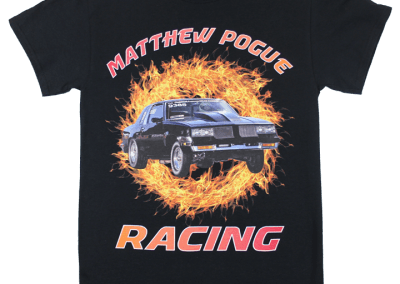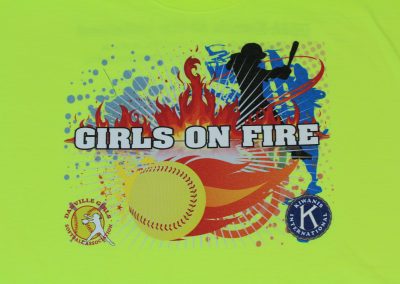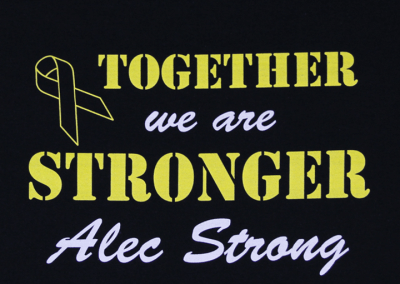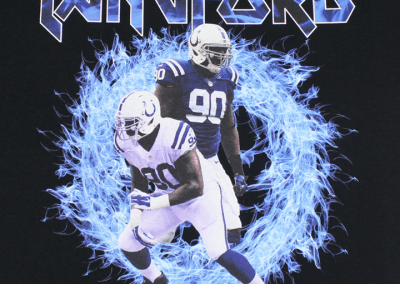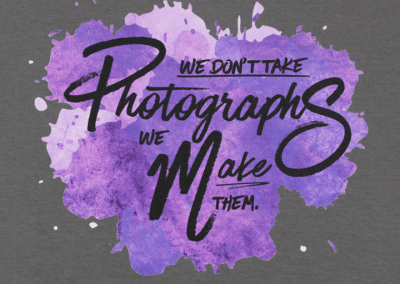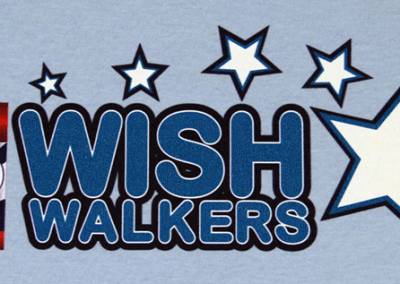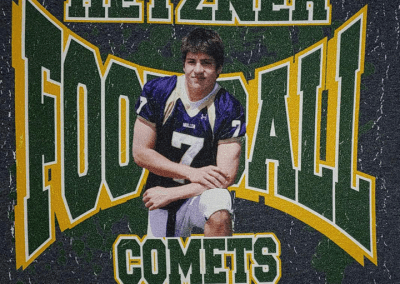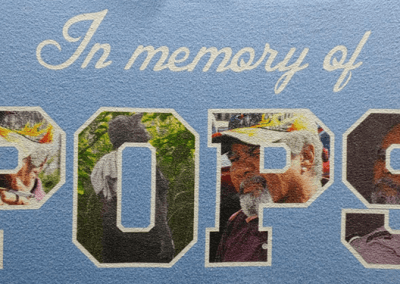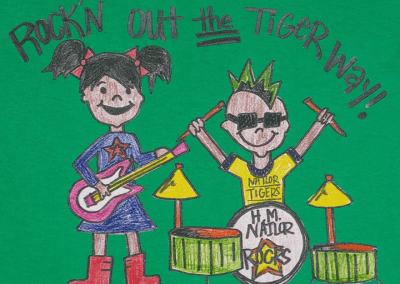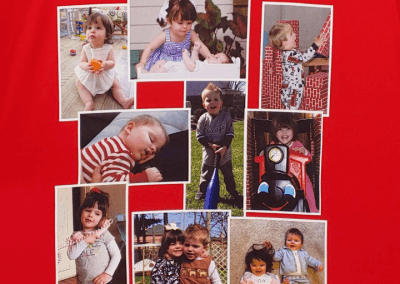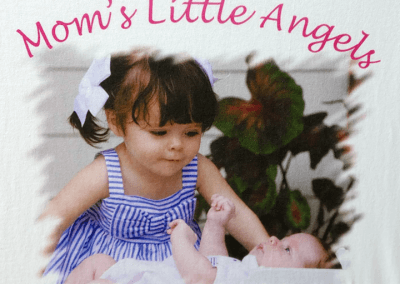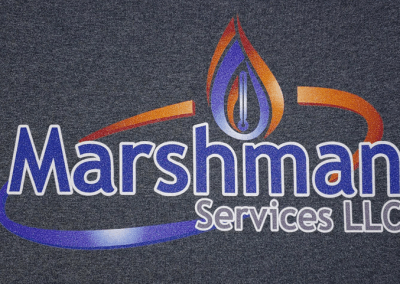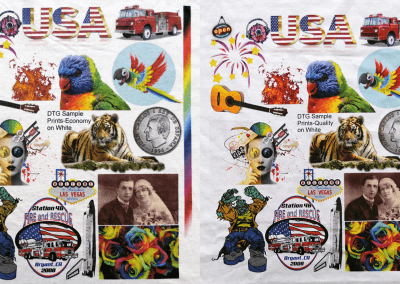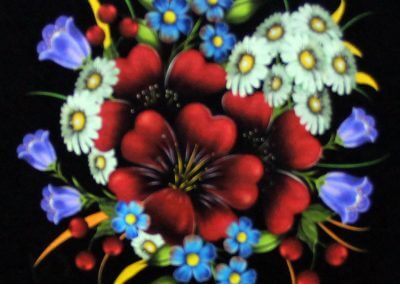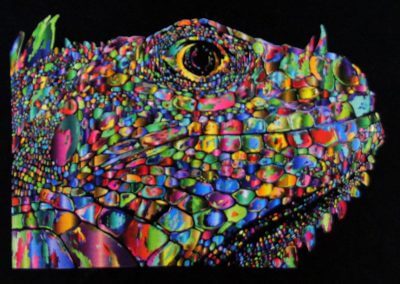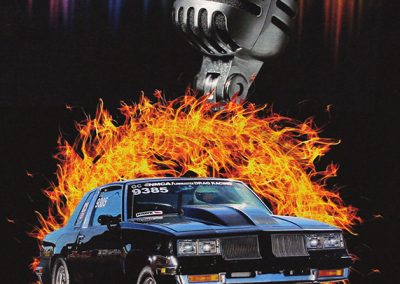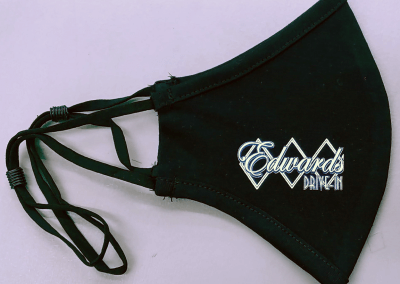CUSTOM DIRECT TO GARMENT
Direct to Garment Printing (DTG) Explained
Direct to garment printing (also known as DTG or digital printing) is the newest and most advanced type of apparel decoration. DTG printing works best with complex, colorful artwork. We do not recommend using DTG printing for large areas of solid color. DTG printing is the ideal print method for on-demand printing and fulfilment.
Instead of using screens for each color like screen printing does, direct to garment printing uses a specially designed inkjet printer to print full color images directly onto the garment in minutes. Additionally, direct to garment printing doesn’t print on another medium first, hence it’s name. For example, heat transfers, sublimation, and vinyl all have an additional step in the production process.
Advantages of direct to garment printing over screen printing are quick setup times and affordable, vibrant, full color prints. Additionally, using CMYK+White inks, you can print a one-off photograph on a shirt for under $20. With traditional screen printing using 4 color process printing, this same job would likely cost you well over $200 with screen charges and printing minimums.
It is very important to understand what DTG printers can and cannot do. Generally speaking, anything that can be opened with Adobe Photoshop can be printed using DTG technology. However, there are limitations. First, your monitor has a wider color gamut than the printers can print. Colors may appear different on a shirt than you see on the screen. Second, DTG printers do not have neon, glitter, glow, metallic, or other specialty inks. Our printers all use CMYK inks. That said, our Epson printers do a great job of printing a metallic effect with a properly designed file.
DTG Inks and Pretreat:
All DTG inks are water based and translucent. Therefore, a base layer of white ink must be laid down first when printing on colored shirts. Then, the color inks are printed on top of the white base. Without the white ink base layer, you would not be able to print yellow ink on black shirts. To get the inks to bond to fabric, the fabric is pretreated with a special formula prior to printing. This process varies based on the manufacturer and will be discussed further below.
DTG Equipment:
There can be large variances in the quality, capabilities, and speed of DTG printers (from modified ink jet printers to custom built industrial machines). For example, some machines do not have the ability to print white ink or on materials other than cotton. Additionally, most printers cannot pre-treat the garment.
We currently operate industrial DTG printers from Epson (F3070 models). Our Kornit Breeze printers have been retired. We use a custom-built Lawson pretreat machine that sprays an area of 18″x22″. The pretreated shirt goes into either a 16′ x 20″ or 20″ x 25″ heat press. This combination of equipment allows us to print the max size design without the risk of “missing” the pretreated area.
We use forced-air gas tunnel dryers to cure all DTG prints. This results in more vibrant colors than when using a heat press to cure inks. There are very big differences between the two printers, the pretreat process, what fabrics they print on, and the file requirements to get the best-looking prints possible.
Now that you know the limitations of DTG printing, the following sections will describe how to make files properly for our Epson DTG printers. Following these guides will yield the best results. We will not reprint shirts because the print doesn’t look right because you supplied poor quality artwork.
Epson Features and File Requirements
| DTG Printer Type | Epson F3070 |
| Color Mode | RGB (printers are color profiled & quite accurate) |
| Color Space | sRGB IEC61966-2.1 |
| File Format | 300 dpi PNG |
| Transparent Background Required? | Yes, except on white or black shirts (when using 0/0/0) |
| Removes Black from Printing? | Yes, on black shirts with RGB value of 0/0/0 for black areas |
| Recommended Garment Fabrics | 100% combed ringspun cotton |
| Number of Pallet Options | 10 |
| Good for Fades & Transparencies? | Yes, on white and dark shirts |
| Prints Neon/Flourscent Colors? | No |
| Prints Metallic Inks? | No, but does GREAT at simulating |
| Prints on Sleeves? | Short and long sleeves |
| Max Print Area | 16″ x 20″ |
| Pretreat Scent? | No |
| Heat Press Box on Finished Goods? | Yes, but washes out |
EPSON F3070 FEATURES, FILE SETUPS, AND MORE
Epson Artwork Settings:
For best results and to avoid artwork charges, artwork should come in the following format:
- PNG file format
- Color Mode set to RGB
- Color Space set to sRGB IEC61966-2.1
- Transparent Background
- 300 dpi image sized to be the actual print size you want on the shirt.
- If using Photoshop, trim away the excess background (Image>Trim). Your design should fill up the canvas. (Don’t send a 3″ x 3″ image on a 12″ x 10″ art board).
- Items downloaded from the internet (unless purchased from artwork sites) are generally only 72 dpi-low resolution files, and in most cases, illegal to reproduce. If you don’t have professional graphic design software we can create something for you.
- NOTICE: Any files that come in another format will need to be converted to PNG format. If not designed correctly, this could change the color profiles and will result in artwork charges. Following the step-by-step instructions in the PDFs is critical for good results.
Epson Print and Pallet Sizes:
Our Epson printers can print up images up to 16″ x 20″ in size. We have a lot flexibility with the Epson printer due to the number of pallets we have. Most garments will fit on one of these pallet sizes. Items that cannot lie flat on one of these items have a non-flat fee.
We offer six different print size price points…up to 24 sq in, 24.01-80 sq in, 80.01-120 sq in, 120.01 to 168 sq in, 168.01-252 sq in, and >14″ wide OR >18″ tall. Please see our price charts for more information.
| Name | Pallet Size | Ideal Uses |
| Facemask Pallet | 3″ x 3″ | Facemasks and other apparel with a small print area |
| Short Sleeve Pallet | 4″ x 4″ | For printing the left/right short-sleeve or left/right thigh |
| Baby Pallet | 6″ x 7″ | For printing onesies |
| Toddler Pallet | 8″ x 10″ | For printing Toddler shirts and some tote bags |
| Long Sleeve Pallet | 4″ x 18″ | For printing long sleeves or pantlegs |
| Youth Pallet | 10″ x 12″ | For printing youth and smaller women’s sized shirts, and totebags |
| Adult Pallets | 14″ x 16″ & 14″ x 18″ | For printing most adult shirts |
| Wrap-Around Pallet | 13″ x 20″ | For printing the side of a shirt (around the sleeve) |
| Zip-Up Hoodie Pallet | 16″ x 20″ | For printing over the seam of a zip-up hoodie |
| Oversize Pallet | 16″ x 20″ | For printing 2XL+ adult shirts |
Epson Pretreatment:
All Epson-printed garments using white ink must be pretreated. Pretreating white shirts is recommended, but not required. The Epson pretreat has no smell to it. However, it does have a stiff feeling. This goes away after the first wash, giving the shirt and print a pleasant feeling (aka: Soft Hand).
Epson Print Locations:
Do to the wide variety of pallet shapes and sizes, we can print in most places on a garment. Any items that do not lie flat on the pallet will incur a non-flat fee.
Epson Printable Fabrics:
DTG inks are designed to print on 100% cotton. Lightweight, 100% ringspun combed cotton generally works best, as the fibers are smoother and the ink lays down flatter. Although cotton/poly blends can be printed, we do not recommend it. For garments made of non-100% cotton, we recommend DTF. For best results, please ask us about the best shirts you use prior to ordering. Selecting shirts we have not tested and recommend is not advised.
The less cotton in the garment, the less vibrant the colors will appear. Also, the more polyester in the garment, the more likely die migration is to occur. “Garment-dyed” shirts can be hit-or miss. Due to frequent, but random manufacturing issues, we no longer recommend any Bella+Canvas shirts for DTG printing. Print quality and washing issues are too prevalent. If you supply Bella+Canvas shirts, you do so at your own risk. We do not print 100% polyester garments with this printer.
Epson Print Settings:
Direct to garment printing offers many settings to choose from. Those settings result in thousands of ways to print the same file. For instance, these settings include print speed, ink levels, number of coats of white ink, print resolution, etc. While many online fulfillment centers use budget settings and choose quantity over quality. We offer three different print options:
- Printing any color(s) on white shirts: We pretreat the shirt with a special type of pretreat just designed for CMYK inks. The result of the pretreated shirt is better colors, sharper images, and better washability. The same setting are also used for printing black ink only on colored shirts.
- Printing full color on colored shirts: We print using color-profiled RIP software and two passes of ink. The first pass is the white underbase layer. The second pass is a a white highlight and color layer. This results in the most accurate colors and bright whites.
- White Ink Only on colored shirts: We use two passes of white ink. This should mainly be used for complex white ink designs in very small runs. Vinyl or screen printing will likely be better options for simple designs and/or bulk runs.
Epson Ink Curing Process:
Our Epson direct to garment prints are cured in a forced-air gas tunnel dryer. This allows for better color and higher production speeds versus curing with a heat press like many smaller companies do. Curing the ink is just as important as the printer and print settings used to print a design. Proper curing must occur to achieve wash-ability and a long-lasting print. Many decorators rush this step and while the design looks done, it will not make it through the wash. A good way to know if a print is cured is to stretch it. If the ink stays in place, the print is cured. If it cracks, the ink has not bonded to the shirt. This will fall off in the wash prematurely and you will not be pleased. Stop by our office and we can show you this in person.
Other Information about Epson DTG printing
Recommended Graphics Software for DTG
When creating artwork for any print method, we recommend vector-based software (like Corel Draw or Adobe Illustrator) for graphics/logos, and raster-based software (like Photoshop) for photographs and photo-quality designs. Vector-based software will allow you to make your logo any size you want it initially and scale it to any size (from decorating a pen to printing a billboard) without losing image quality later.
On the contrary, the larger you blow up raster-based images from their originally created size, the worse they will look. You can always save vector-based artwork in raster formats (when needed) down the road. Raster-based software needs to be recreated in vector-format when vector files are required. This normally incurs art charges.
Please note: Many of the free graphic software programs have limitations on color and file format exports. Just because something looks great on your phone, doesn’t mean will look great when printed on a shirt.
Garment Fabrics
DTG is designed to work best with 100% combined ringspun cotton. From all of our tests, these types of garments give the best results, by far. They are available from many manufacturers in different sizes, colors, and price points.
Blends can work but do not look as good as pure ringspun cotton shirts. Therefore, we do not recommend them.
100% polyester can be printed with the Epson printers, but the results are not great, and we don’t recommend it.
Garment/pigment dyed shirts are becoming increasingly popular. However, the pigment-dyeing process, each garment has a unique character. Please allow for slight color variation in production and washing. This also affects how DTG prints look on these types of garments. Due to the nature of pigment dye, loose pigments may remain on the surface of the garments. We therefore strongly recommend washing these garments only with like-colored garments, as some of the pigment dyes may stain light or white colored garments in the wash cycle. Washing the garments in cold water will reduce the possibility of staining. Because of this, we do not recommend DTG printing on any of these types of garments. These characteristics make it virtually impossible to “dial in” print settings as they vary from shirt to shirt. If you order these garments, we are not responsible for bad print quality.
For garments that are not 100% cotton, in most cases, we recommend DTF.
Image Size
When creating DTG print files, artwork should be made and sent to us at the size you want it printed. Be careful not confuse image size with canvas size. Image size is the size of the actual design. Canvas size is your work area. Confused? First, take a regular sheet of 8.5” x 11” paper. That is your canvas. Then, draw a picture in the middle of the paper. That is your image size. How big is your image? That answer depends on what you drew, but should be significantly smaller than 8.5” x 11”. If you drew a 3” logo, that is what size you should expect it to be printed at. If you want a front chest design, your design should fill the entire piece of paper (or possibly larger). This article explains the difference a bit more.
Color Modes
Regardless of what printer you design files for, do not mix CMYK and RGB color modes, or use Spot/Pantone/PMS colors in the same file! Under no circumstances will we offer refunds or reprints if you are not happy with the end result and you do not follow our file setup guidelines! If you are not a designer, we suggest you hire a designer.
Design Tricks
If printing on cotton/poly blends, we recommend distressing the artwork. Printing on these fabric types doesn’t give the same results as ringspun combed cotton does. The distressed effects help hide the flaws and give the print a more “vintage” effect.
Not matter what shirt type you print on, we do not recommend large blocks of solid ink coverage. There are a variety of techniques you can use to help break-up solid areas. For example, you can add marbled effects, fades, color changes, and different filters. Remember, DTG printers are designed to print complex and detailed artwork. You do not need to simplify your artwork like you would for other decorating methods like screen printing, embroidery, or vinyl.
Garment Care for all Direct to Garment Printing
Once you have your garment, proper care is necessary to achieve a normal garment and print life. Most importantly, wait 24 hours after printing before washing a shirt. All shirts should be washed before wearing and before exposing to UV light (sunlight).
For all garments, we recommend cold-water washing inside out and hang drying. You may tumble dry on fluff (no heat). Never iron over the decoration. Following these steps will help you achieve the maximum amount of life for your garment. Just remember, no garment or print is designed to last forever!
Direct to Garment Sample Prints
Photographic full color print for spirit-wear
We have samples of all this and more in our office. Please contact us to schedule an appointment and check them out, get your questions answered, and see if direct to garment printing is right for your apparel project!
In conclusion, we’ve explained what direct to garment printing is about. If you are looking for custom direct to garment printing in the Indianapolis Metropolitan area (Alexandria, Anderson, Arcadia, Avon, Bargersville, Beech Grove, Broad Ripple, Brooklyn, Brownsburg, Camby, Carmel, Chesterfield, Cicero, Clayton, Clermont, Cloverdale, Cumberland, Danville, Edgewood, Edinburgh, Elwood, Fishers, Fortville, Franklin, Frankton, Greencastle, Greenfield, Greenwood, Indianapolis, Ingalls, Lapel, Lawrence, Lebanon, Martinsville, McCordsville, Meridian Hills, Monrovia, Mooresville, Morristown, Nashville, New Palestine, New Whiteland, Noblesville, Pendleton, Pittsboro, Plainfield, Princes Lakes, Shelbyville, Sheridan, Southport, Speedway, St. Paul, Thorntown, Trafalgar, Warren Park, Westfield, Whiteland, Whitestown, and Zionsville), A+ Images can help.
Not located in one of these cities? We also service Bloomington, Fort Wayne, Terre Haute, Evansville, Northwest Indiana. Wholesale direct to garment services are available.

